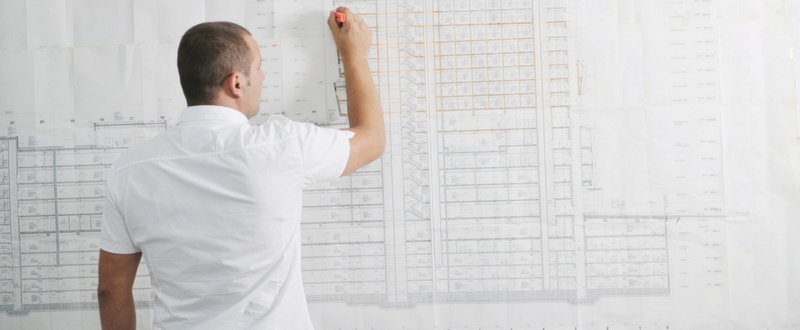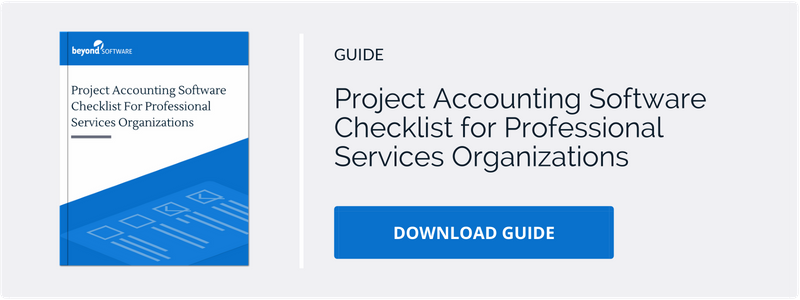Recent discussions with international building design specialists point to two disparate yet comparable challenges facing today's architecture industry: how to embrace the values of the future while overcoming the shortfalls of the past. While architecture schools and curriculum options expand to address new building models, materials, and theories, our evolving society is forcing changes to the way populations live and work together. Today's and tomorrow's architecture firms must find the tools they need to master both challenges if they want to have the experiences of the past teach them the lessons they need for their future.
Past and Future Concerns
Opinions about the future of the architecture industry differ based on the specific perspective of the speaker. Old-guard professionals point to evolutions in social and political strategies, while their younger colleagues look at the ever-changing impact of technology on how building design gets done. Both offer notable insights.
How the Past Affects the Future...
A conversation with Rem Koolhaas at the 2016 AIA conference in Philadelphia PA revealed his concerns about how the industry's shortfalls will affect its impact on the future. Koolhaas founded the Dutch architectural firm OMA and received the Pritzker Prize in 2000 at least in part because of his theories that architecture must "get involved ... [with] ... compelling and immediate new issues. ... ."
He sees the biggest challenge for tomorrow's architectural leaders is keeping true to the lessons of the past while embracing the emerging opportunities of the future. " ... [W]e're the last profession ... whose roots go back 3,000 years [that] still demonstrates the relevance of those long roads today."
He plans to use his long memory of mid-20th Century European rebuilding to inform his company's efforts to address that continent's emerging refugee crisis. "Refugees ... offer to architecture an interesting ... invitation to do good work and collaborate in interesting ways."
Martha Thorne, the Executive Director of the Pritzker Architecture Prize and Dean of the IE School of Architecture and Design is also focused on how architecture will support the globe's growing urban populations. She sees inequality and sustainability as the two biggest challenges presented to today's city designers, overlaid with the realities of an overall aging population and the influx of foreigners into previously homogeneous regions.
But Thorne's perspective goes beyond social issues to economic and political challenges, too. In her view, the cities of the future will (or should) offer a higher quality of life for all classes of the population, on each of the housing, governance and civic strategy levels. Denser population groupings will result in improved urban services, better energy management, and increased education and healthcare opportunities and architects will contribute significantly to "the city" as a cultural and innovation center.
And the Future Reflects the Past
From a different perspective, other professionals note challenges facing the industry that are less broad in scope, most notably the problems posed by the minutiae of detail that engulf every architecture project. Not surprisingly, these issues are often the direct cause of projects that fail to come in on time or on budget.
Project Management Challenges
Every architectural project is also an engineering and construction project, and the effort of each of those professionals in their particular project sector is critical to the ultimate success of the whole endeavor. In many cases, the architect is appointed to act as the project manager (ArPM), who thereafter directs the work of the others to achieve the client’s primary goals of bringing the work in on time and on budget.
However, without project management skills, many architects can flounder in this role, as was made evident in a case study conducted by Hindawi. That study surveyed 36 Malaysian construction industry entities and evaluated how the relative skills of the ArPM impacted individual construction projects. Survey results revealed that the critical challenges to the project that were presented by an ArPM included (among other things) “poor planning, … inappropriate scheduling, … and poor workmanship.” Unfamiliarity with technology was also identified as a challenge, which may have exacerbated the other challenges revealed by the study.
Ergo, past traditions (ArPM) and cultural nuances (independence versus partnering on projects) will continue to hinder today’s architects as they attempt to achieve the goals of their future clients.
Data Management Challenges
Even the best PM is challenged if the data doesn't - or can't - report progress. Other architectural challenges arise when PM officers rely on insufficient or even absent data:
- Tracking time invested in individual projects is critical to accurately capturing costs and expenses. Labor estimates are often wrong and failing to track actual time against an estimate is a frequent cause of poorly performing architecture projects.
- Tracking materials is equally critical to project management accounting. Late deliveries throw off schedules; insufficient supplies cause both cost and scheduling disasters and underestimated needs add dollars to the expense sheet. Missing that data for the final billing cycle can be disastrous for the architecture firm.
- Balancing the activities on one project with other projects is another data nightmare for many architects. Visibility across each project or series of projects is the only way to maintain control of all the details needed to complete each one satisfactorily.
Accounting for each of these issues is a continuing challenge for many, if not most architects. When combined with the social and economic concerns raised above, it's no wonder that today's architects are flummoxed by future expectations when they're having such significant problems managing today's project details.
Beyond Software Professional Services Automation Tools Look Both Forward and Back
From Beyond's perspective, technology is available now to address all the challenges raised by both today's young and emerging architects, as well as those of the industry's Old Guard.
- Beyond's intuitive dashboards highlight insights on a project or corporate basis, giving PM and company management the data they need for making critical and timely decisions. Integrating project and financial programming into a single solution keeps all relevant data contained on a single screen, so no important detail is missed or left out.
- Time and expense tracking is a snap with mobile and desktop apps available. Beyond's apps give every worker assigned to a project the capacity to record activities on the go, keeping data sources current to real-time. And the apps capture expense anomalies in real-time, too, so project managers can see where their budgets and expectations are off.
- Managing the full roster of project resources is perhaps the biggest challenge for every architect, especially those who manage more than one project at a time. Beyond's software tracks resources by date, rate, and vendor (among many other options), so the design professional can choose which tracking mechanism works best for each individual job.
- And, of course, generating accurate and fully populated billing statements based on actual project data is the best practice to guarantee timely and complete payment for services rendered.
Most architects are enthusiastic about how their profession can and will impact the communities of the future. With accurate and comprehensive project accounting technology assisting them, they can turn their design eye to those adventures, knowing that Beyond Software's PSA software is capturing the details of their every move.
For additional information on Beyond Software please contact:
Nicole Holliday
nholliday@beyondsoftware.com
866-510-7839




